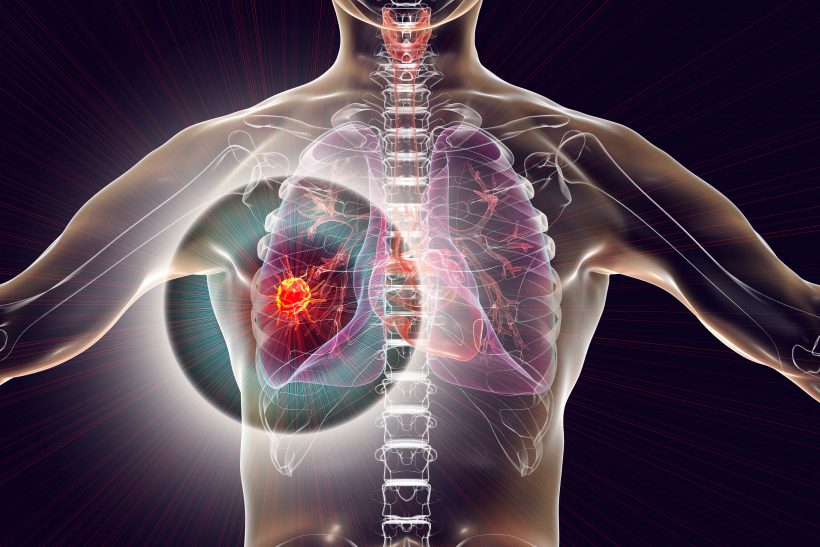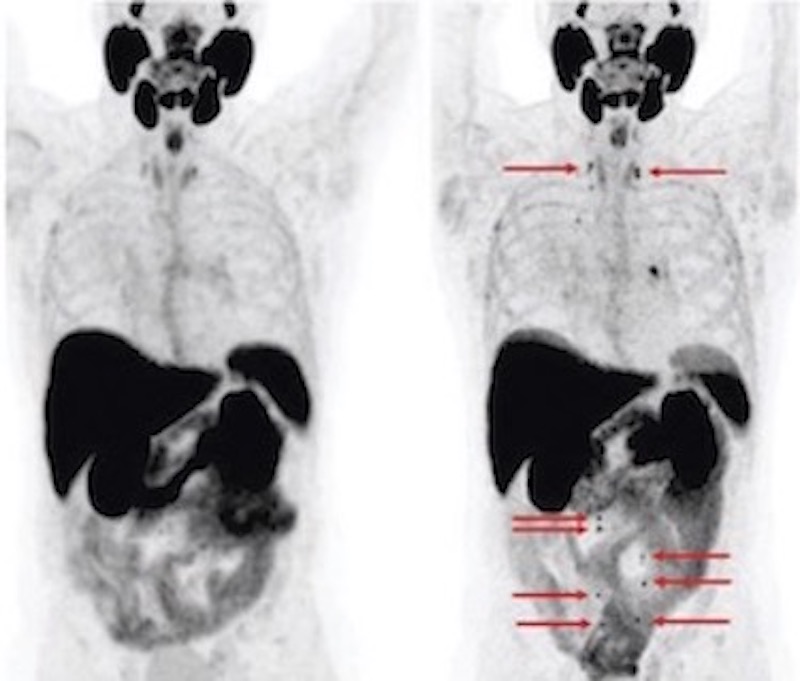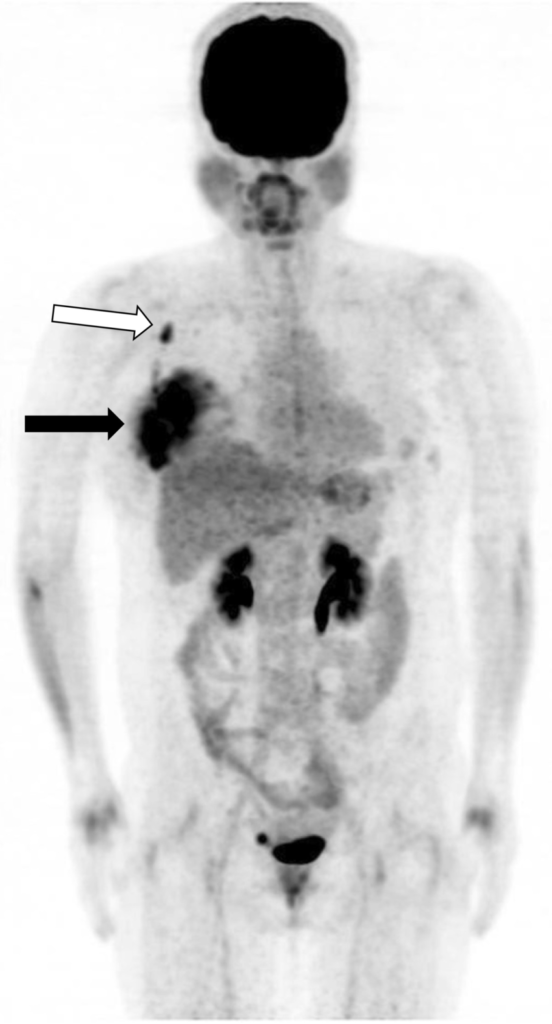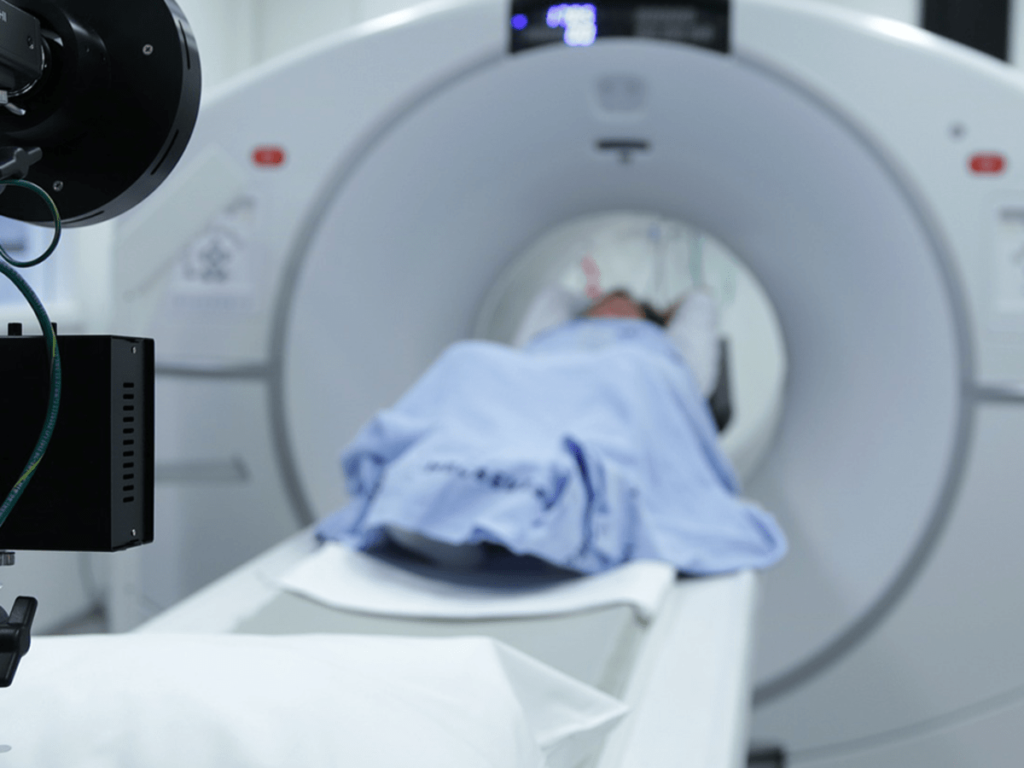Interpretation of Pet Scan’s answer

Pet scan is one of the most powerful tools doctors have for diagnosing and monitoring the disease. Pet scans are often used along with CT or MRI, helping radiologists differentiate between healthy tissue and patient tissue so that cancer is accurately diagnosed or proper timing and treatment is performed. But for many patients and their loved ones, the complexity of pet scans can be a challenging experience. To better understand how Pet Scan works and its benefits, we’re going to let you know the basic concepts of Pet Scan and to some extent teach you how to interpret the pet scan answer. So follow this article with us.
What does your pet scan answer say? (FDG Uptake, SUV)
For many patients who receive pet scans, their number one question is about understanding the meaning of FDG absorption. Whether written in their pet scan response report is “non-absorption of FDG,” “abnormal absorption of FDG,” “low-grade FDG absorption” or any other changes – usually no explanation is mentioned in the report to help patients understand what this means.
FDG absorption refers to the amount of radiodharmuge absorption in body tissues. There is a perception among patients that any absorption of radiopharmaceevus is abnormal. However, this is not always true and can cause unnecessary alarm and concern.
So while a patient can take their report to their cancer specialist to explain their pet scan response, it is also curious to find out the results of their pet scan beforehand.
The Pet Scan report will also show another parameter called SUV (standard absorption value). The SUV is a benchmark used for regulatory purposes to see how things change over time. People don’t necessarily have to worry about it, even if the numbers change dramatically. The SUV changes are supposed to be interpreted as part of the overall picture of what’s going on.
In a CT scan, suppose you have a 1cm tumor and it doubles in size – now it all depends on the type of cancer and the type of treatment, but for the most part, people say yes – it shows me that the disease progressed.
Likewise, in a scenario where the intensity of a pet-scan SUV doubles over time, it is very common to assume that the disease has progressed. But actually, it’s not necessarily always that way. The six-month changes should be a general assessment. Not just whether the numbers are increasing or decreasing. The amount of SUV is one of several ways to follow the scan, but this parameter is not an absolute way to check the meaning of the results.
The role of the referring physician is also discussed here. They must provide any laboratory work or other scans performed, as well as general clinical information about how the patient feels, to specialist radiologists.
Pet scans have great potential to guide patients and their doctors in the diagnostic and management stages of cancer. But the exact interpretation of PET scans is complicated – even more so than other types of imaging. In pet scans everything is not as clear and straightforward as CT or MRI.
Our advice is to make sure all your medical imaging is interpreted by the relevant specialist. There are many radiologists who start reading pet scans after taking a short training course. Although it may be enough for some cases, their knowledge base is not comparable to that of a nuclear medicine specialist.
To ensure accurate diagnosis and get the most accurate guidance on treatment response and cancer management – it’s important to make sure you have a radiology specialist who interprets your pet scan.
Understanding the basics: How a pet scan works
When a radiologist studies CT scans, radiology or MRI for diagnosis and staging of the disease, what the radiologist is looking for is something that looks different in shape, size, etc. While this assessment allows the doctor to diagnose abnormalities or physical changes, these abnormalities do not necessarily tell the doctor how they behave, while this is a very important part of assessing the disease. This is where the nuclear scan foot, especially the pet scan, opens up to the story.
Nuclear medicine imaging uses small amounts of radioactive material (called trackers) to examine the physiology (how) cells, molecules, chemical interactions, etc. are present in the body. For cancer and disease diagnosis, the most common nuclear scan is pet scan.
Most pet scan devices come with a CT scanner. This combination allows anatomical images of CT scans to be taken simultaneously along with pet images.
How does the tracker work in Pet Scan?
Before pet scan, a small amount of fluorodoxy glucose (FDG) is injected to the patient. The FDG tracker produces color-coded images of the body that show both normal and cancerous tissue.
The role of pet scan in diagnosis, staging and treatment of cancer
In terms of diagnosis, pet scans help us detect abnormal behavior and understand that something is a problem, even when it looks normal. Let’s explain this phrase in a little more detail. When it comes to cancer, it’s sometimes very obvious. We see the shape of the tumor anatomically, in CT or MRI, and it’s clearly known as cancer. But for final confirmation, a pet scan is performed. After that, the patient can begin the treatment process.
But other times, cancer may not be so detectable. In some cases, cancer may be hidden inside tissue that appears to be normal. In such cases, you will not see an anatomical abnormality in a CT scan or MRI. But, with the FDG tracker, we can easily say that that area of tissue behaves unusually, which is a sign of cancer.
What role does pet scan play in staging or staging cancer?
Pet scans can be used for more accurate staging of certain diseases because it provides information at the cellular level. This is done by detecting abnormal behavior in tissues that have a natural appearance, especially in the diagnosis of metastasis cancer.
What role does pet scan play in cancer treatment?
When the patient begins cancer treatment, especially with chemotherapy, one of the first abnormal tumor responses is that it stops functioning. Since the tumor shrinkage process is usually much longer, observing its behavior allows patients and doctors to find out sooner whether treatment is effective. Pet scans can essentially provide valuable information about the progression of treatment before you begin to see anatomical changes you see in an MRI or CT scan.
It can also work in the opposite way. Sometimes things may look good and a tumor shrinks or even disappears. But you may not notice that the disease is still hidden in tissue that looks normal unless you do a pet scan. Despite the successful appearance of treatment, some tumors may still remain.
In general, it can be said that as a therapeutic management tool, pet scans can be very powerful: Before starting treatment, during and after treatment.
Final Word
Receiving the pet scan answer and interpreting the pet scan answer is one of the most specific and scientific diagnostic medical sciences performed by nuclear medicine and radiology specialists, this issue will be done in nuclear medicine imaging centers and pet scan by a specialist physician carefully on each of the images taken from the patient.
In this article, we tried to provide general explanations about how to interpret pet scan responses and basic information about how pet scan help patients. Please keep in mind that the most expert physicians in the field sometimes have a lot of challenges in interpreting pet scan answers. So don’t quickly conclude with a simple look at your pet scan answer. Also, one of the main challenges of patients in taking
the turn of pet scan
from the closest place to themselves has always existed. Medical Scan offers a solution so that you can easily take a free pet scan and do your pet scan without the usual hassle.



















